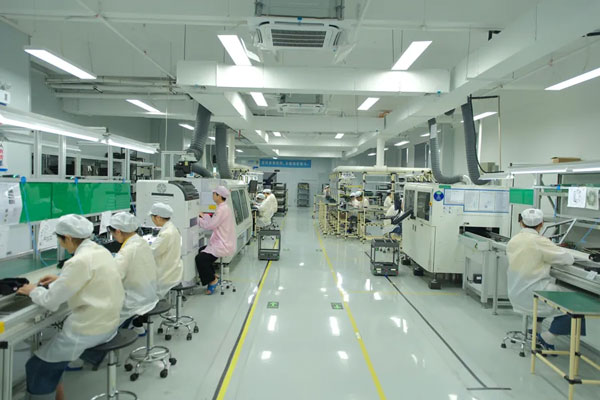In today’s hyper-competitive electronics industry, the time it takes to move a product from concept to market often determines its ultimate success or failure. Whether it’s an IoT device, a smart home gadget, or a wearable health monitor, consumer expectations for innovation and market demands for rapid iteration are testing every electronics company to its limits. For R&D teams, an unavoidable challenge emerges: how can they quickly transform a brilliant idea into a tangible, testable prototype and smoothly transition it to small-batch trial production?
Traditional SMT (Surface Mount Technology) processing models appear increasingly cumbersome in this context. Long lead times, high minimum order quantities (MOQs), and rigid production workflows act as time traps, slowing down the design verification process and potentially causing companies to miss fleeting market windows. It is precisely in response to these pain points that rapid prototyping and small-batch flexible manufacturing have emerged. This is no longer just an optional service; it has become a core strategic weapon for clients to win in the marketplace.

I. Rapid Prototyping: The Accelerator that Turns “Ideas” into “Reality”
The starting point of any R&D cycle is validating the feasibility of a design. Is the PCB layout flawless? Are the selected components optimal? Can the firmware run stably after being programmed? All these questions must be answered by testing a physical prototype. Rapid prototyping services exist specifically to address this core need.
1. Lightning-Fast Response to Seize the Time Advantage:
Professional rapid prototyping service providers optimize internal workflows and establish dedicated fast-track lanes, compressing traditional prototyping lead times of several weeks into just 24-72 hours. This means that after an R&D engineer finalizes the PCB design files (Gerber) and the Bill of Materials (BOM), they can have the fully assembled and populated boards in their hands as early as the next day. This “lightning speed” dramatically increases the frequency of the design-validation-debug-repair loop, significantly shortening the waiting time between design and verification.
2. Low-Cost Trial and Error, Lowering the Barrier to Innovation:
In the traditional model, MOQs of thousands of units make early-stage validation prohibitively expensive. In contrast, rapid prototyping services often support orders as low as a single piece, sometimes offering panelization services to share costs. This allows clients to test multiple parallel designs and bold experiments for a minimal cost, paying only for 1-10 boards for testing. This greatly encourages innovation teams to experiment without fear of significant material waste from design errors, effectively reducing the risk and threshold of the entire R&D project.
3. Professional Engineering Support to Boost First-Pass Success:
Rapid prototyping is far more than simple “contract manufacturing.” Reputable service providers typically employ experienced Field Application Engineers (FAEs) who conduct a Design for Manufacturability (DFM) review before the order is placed. They can proactively identify potential issues in the design that might lead to placement errors, soldering defects (like tombstoning or insufficient wetting), or testing difficulties, and then offer optimization suggestions. This “upfront” professional service significantly increases the first-pass yield (FPY), avoiding the need for repeated prototyping due to design flaws and saving precious time right from the source.
II. Small-Batch Flexible Manufacturing: The Critical Bridge from “R&D” to “Mass Production”
Once the prototype passes all functional tests and the product is ready for market testing or small-scale delivery, the value of small-batch flexible manufacturing becomes paramount. It perfectly bridges the gap between prototype development and full-scale mass production.
1. Seamless Transition to Validate Production Processes:
Small-batch production (typically ranging from tens to several thousand units) is not just about producing the product; it’s a full dress rehearsal for the manufacturing process. Through small-batch trial runs, companies can verify the stability and reliability of key SMT process parameters, such as stencil aperture design, solder paste printing, placement programs, and reflow oven temperature profiles. This provides valuable data and process assurance for subsequent mass production, ensuring high yield and efficiency when scaling up.
2. Adapting to Market Dynamics for Agile Delivery:
For startups or new product lines, initial market demand is often uncertain. Committing to mass production from the outset carries significant risk. Small-batch flexible manufacturing allows companies to flexibly adjust production plans based on market feedback and pre-orders, adopting a “small-step, fast-run” approach. This not only quickly satisfies the needs of early adopters and channel partners but also avoids inventory buildup, enabling a leaner supply chain.
3. Resource Integration for a One-Stop Solution:
Modern flexible manufacturing providers often offer a one-stop, turnkey PCBA service, including material procurement. By leveraging their supply chain advantages, they can source, manage, and warehouse components on behalf of the client, solving the headache of finding scattered parts and managing excess inventory. The client can then focus on their core competencies—R&D and marketing—while outsourcing the complex manufacturing process entirely, thereby significantly boosting overall operational efficiency.
Conclusion: The Evolution from Supplier to Strategic Partner
In summary, rapid prototyping and small-batch flexible manufacturing inject powerful momentum into a client’s electronics R&D process through four key dimensions: speed, cost, flexibility, and professionalism. It transforms the SMT manufacturer from a passive production executor into a strategic partner deeply involved in the client’s product development lifecycle.
Choosing an SMT supplier with strong rapid prototyping and flexible manufacturing capabilities is equivalent to equipping your company with an efficient, reliable, and agile “external R&D and manufacturing division.” In the increasingly fierce electronics market, this means more than just shaving a few weeks off the development cycle; it represents the core competence for gaining a market first-mover advantage, reducing innovation risk, and achieving commercial success. In the future, companies that can forge close collaborations with such strategic partners will undoubtedly go further and faster on the path of product innovation.
